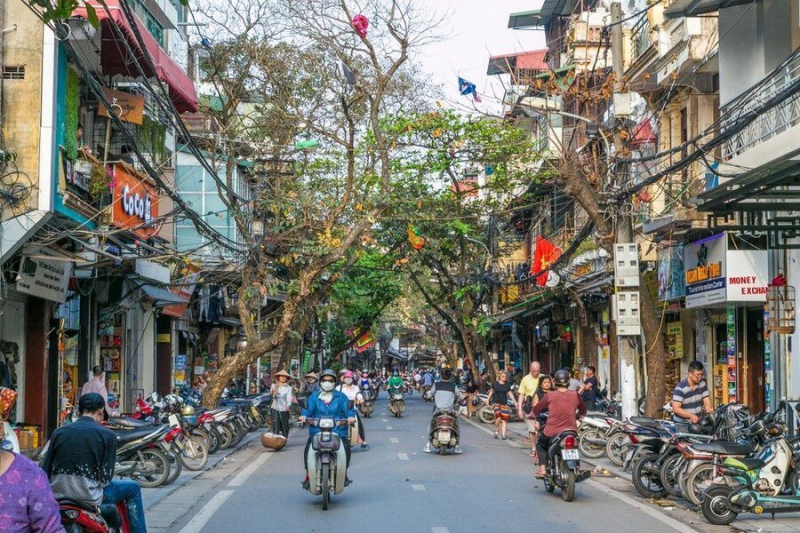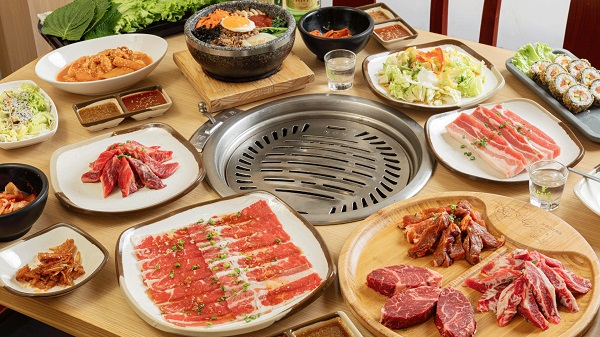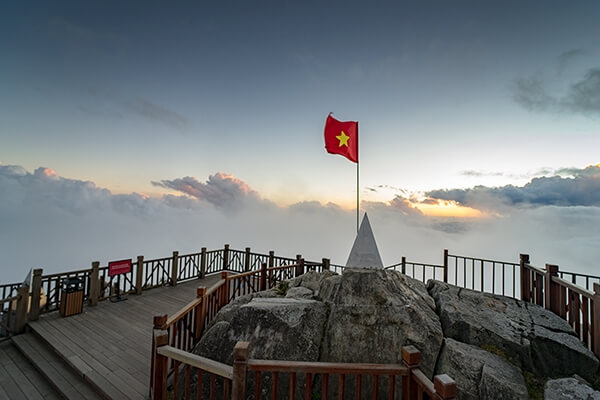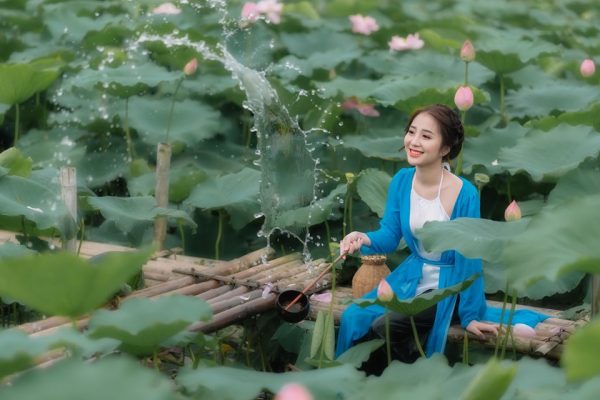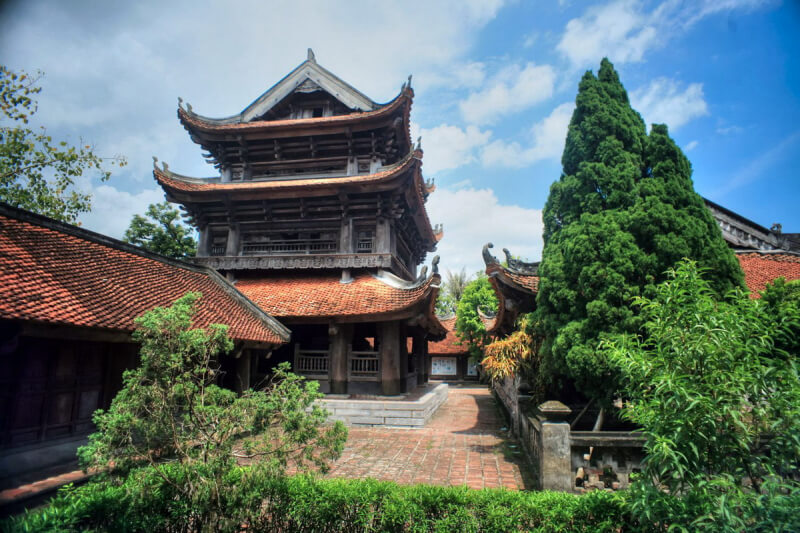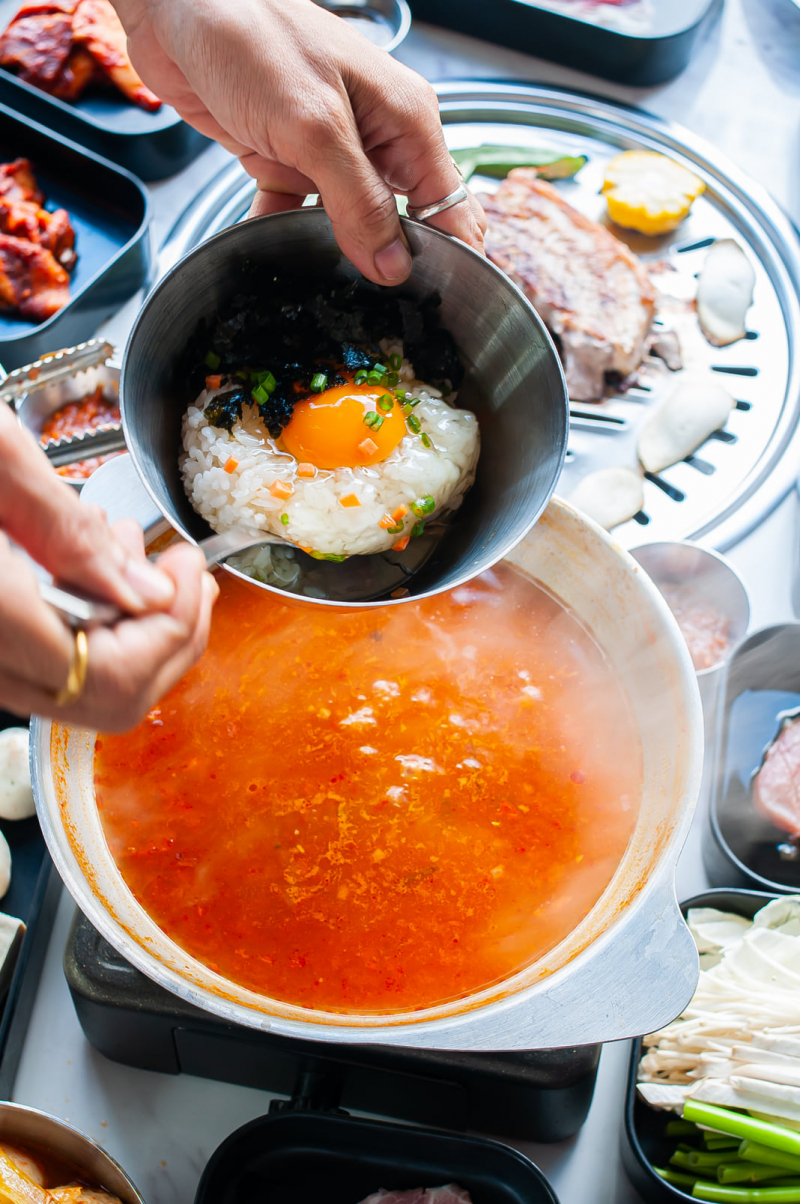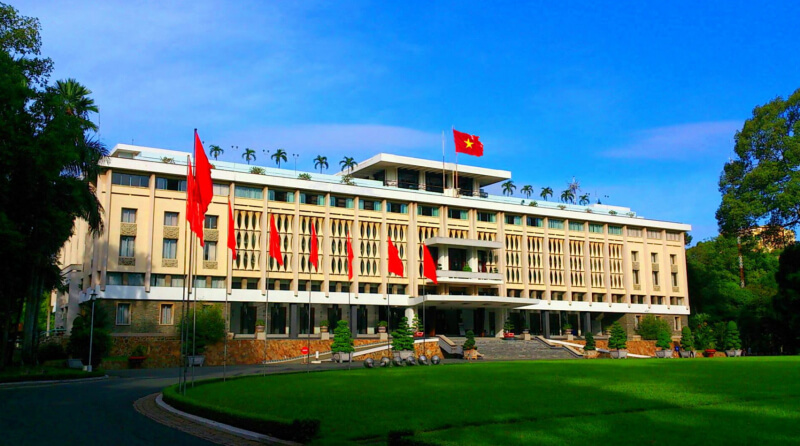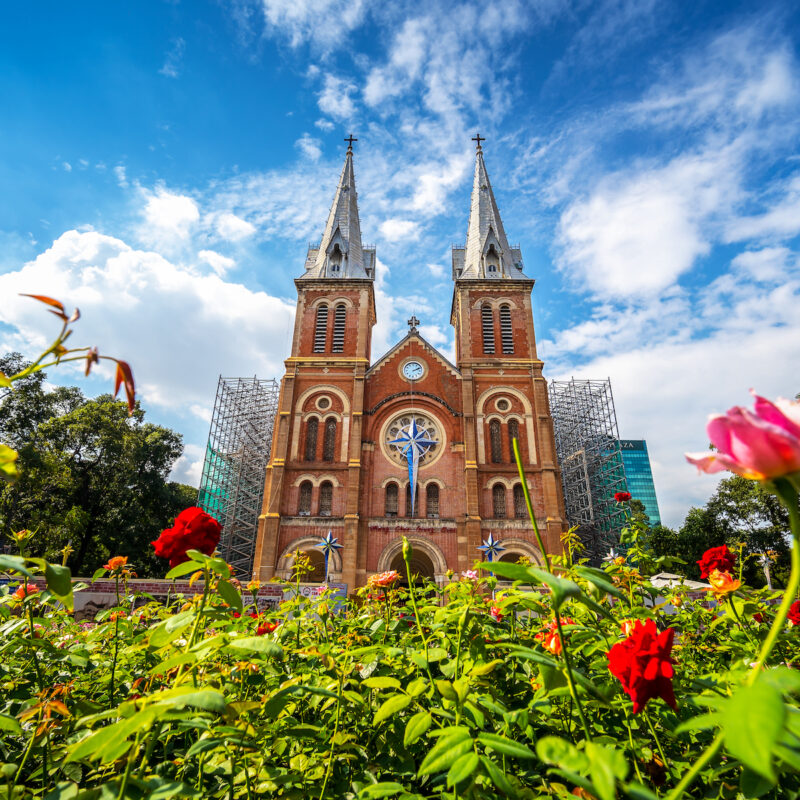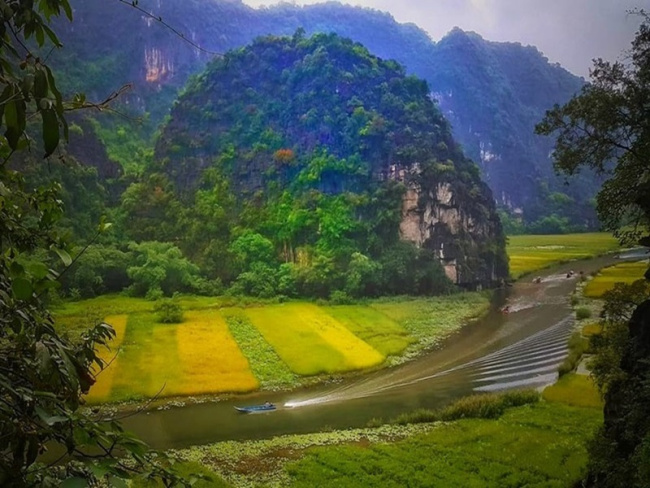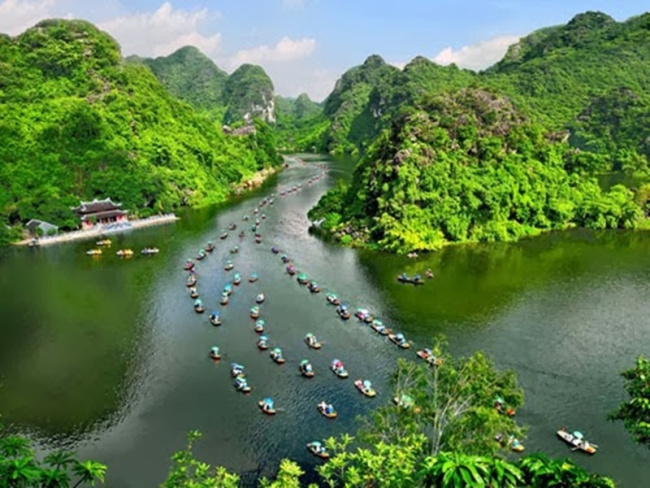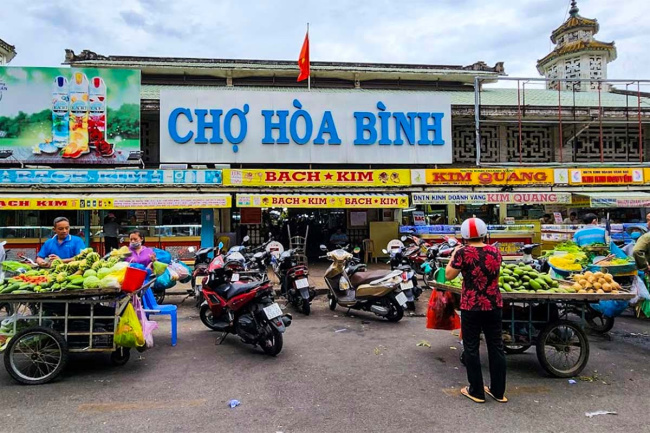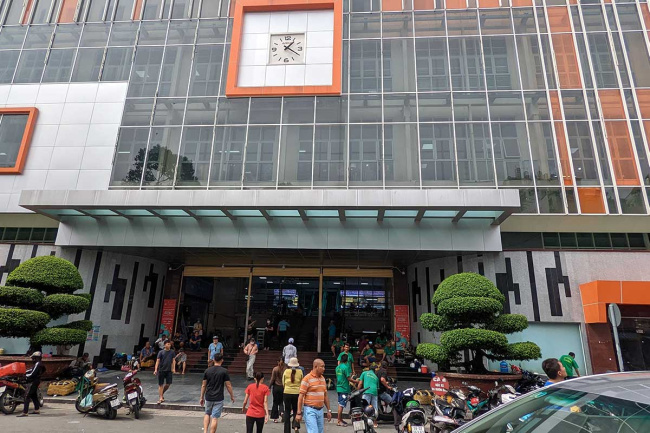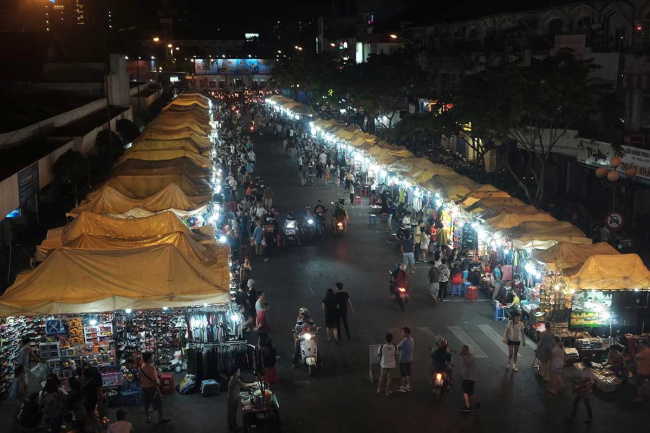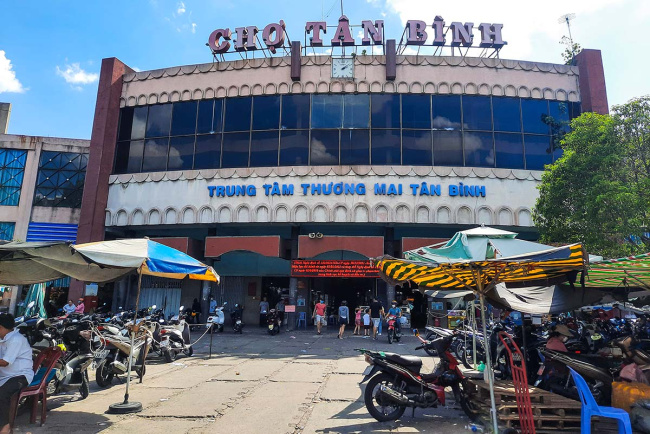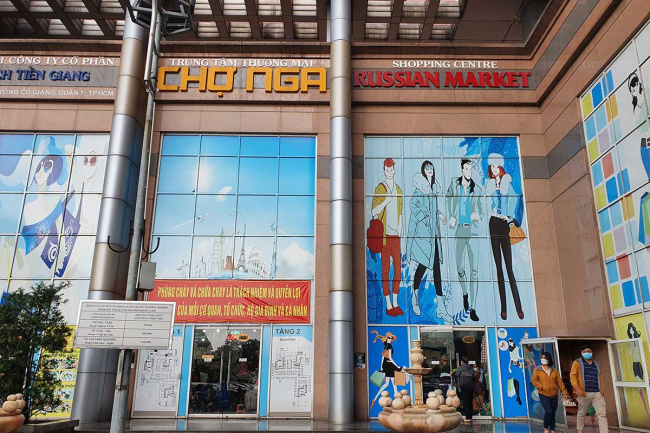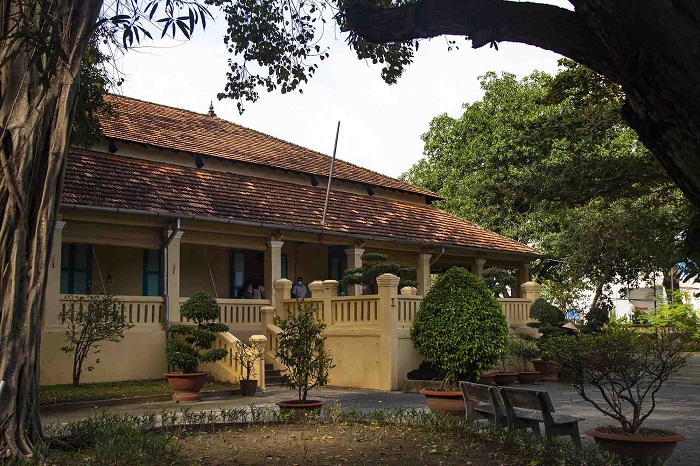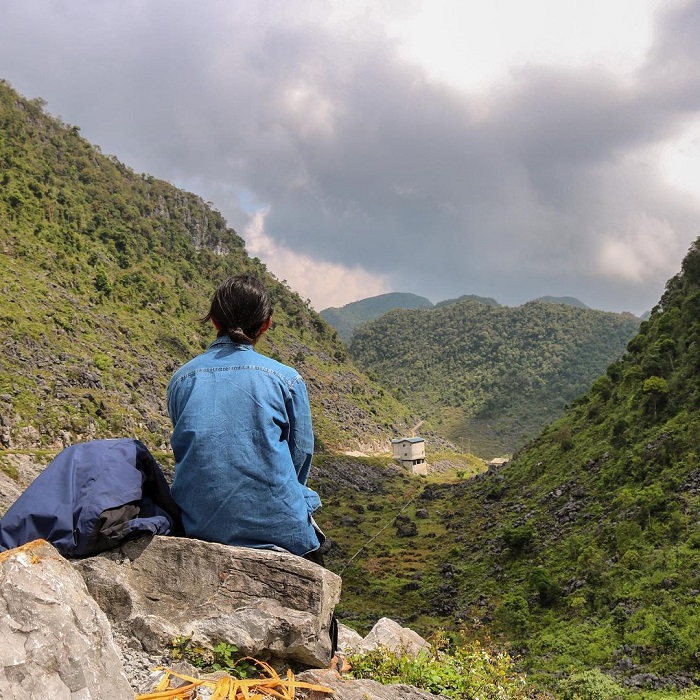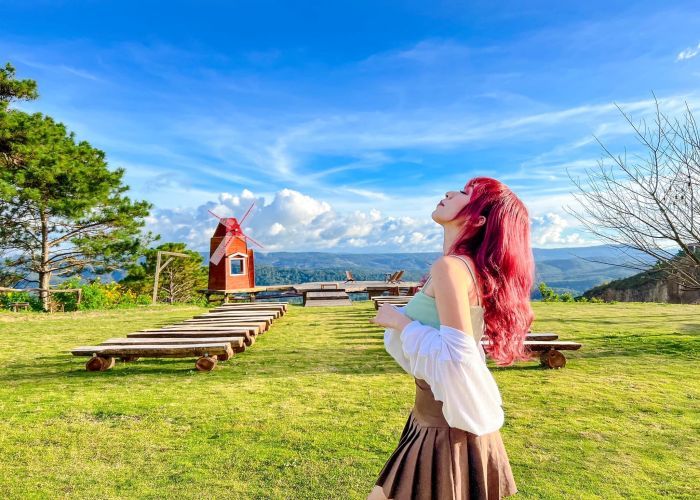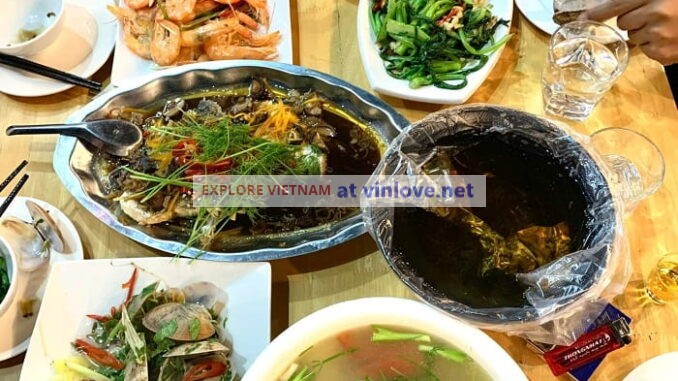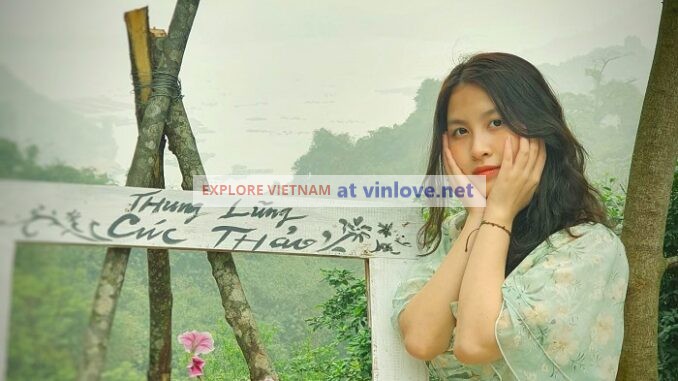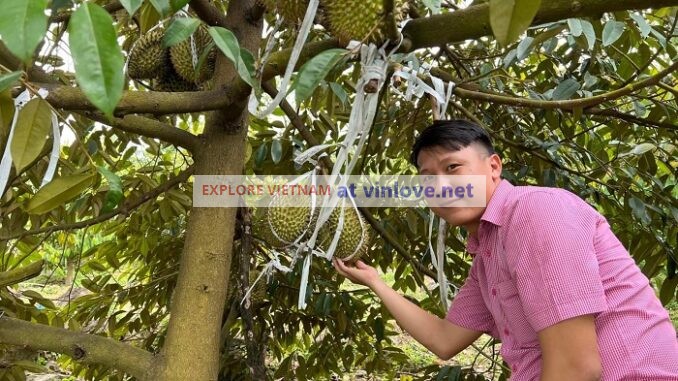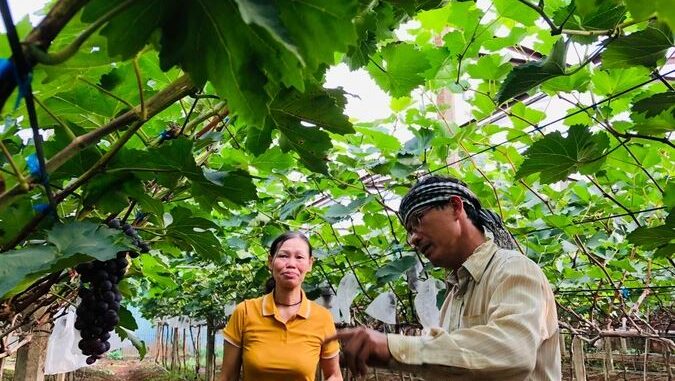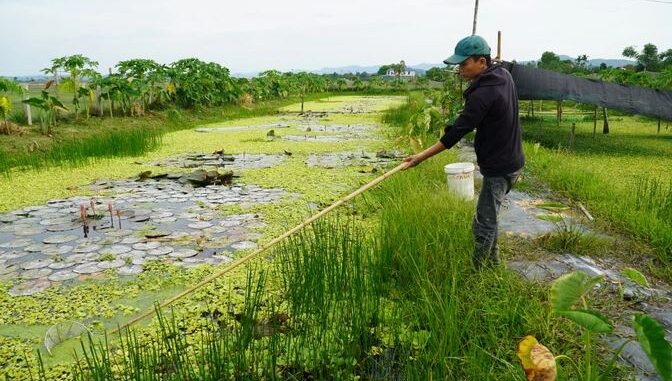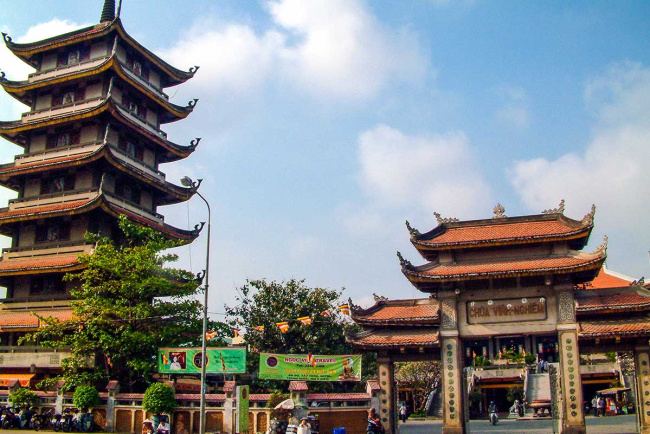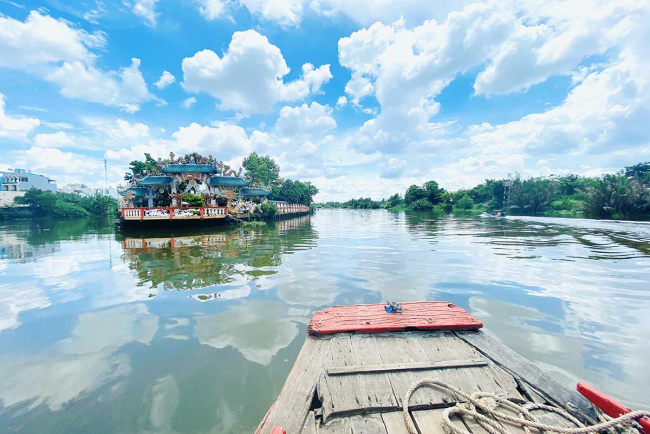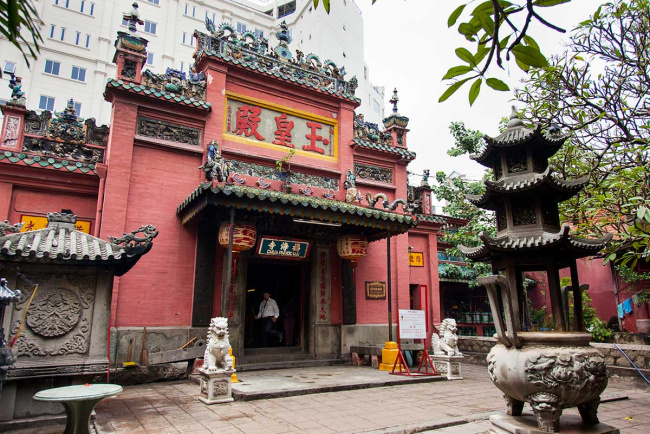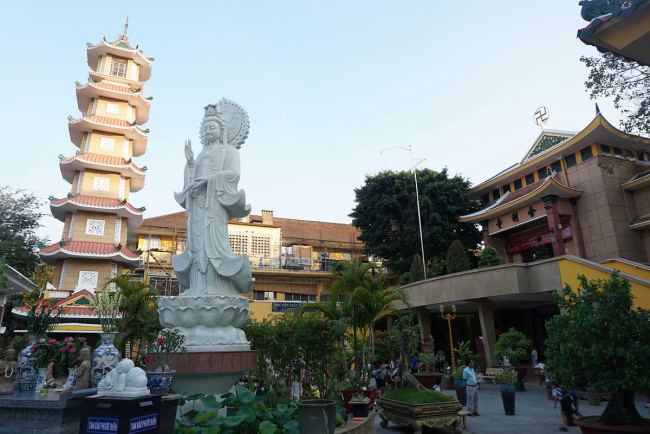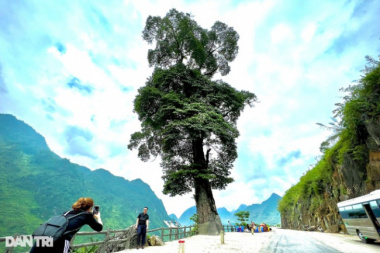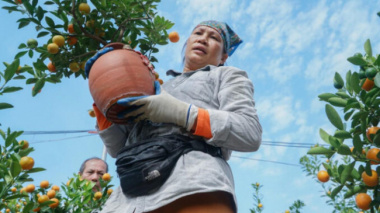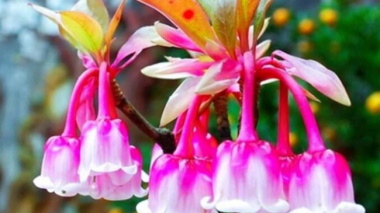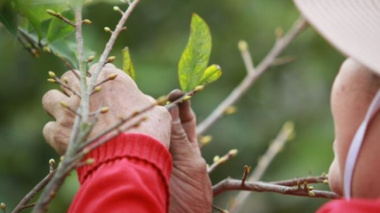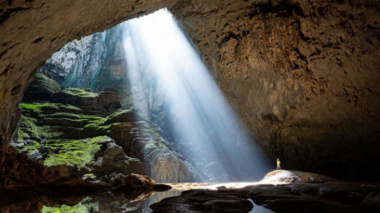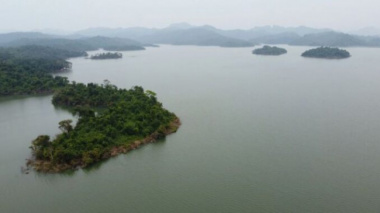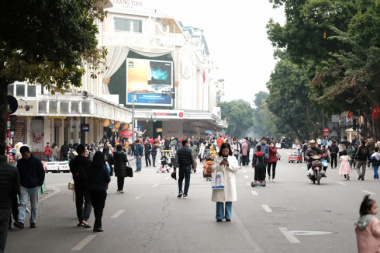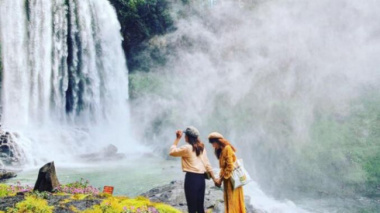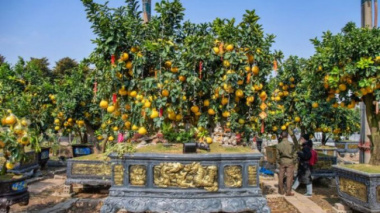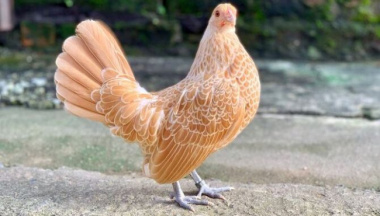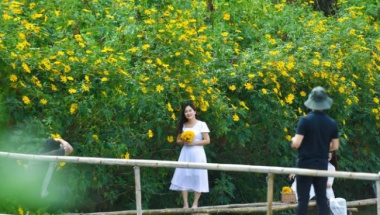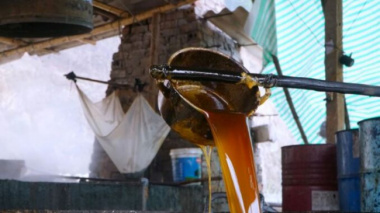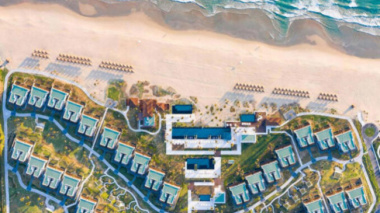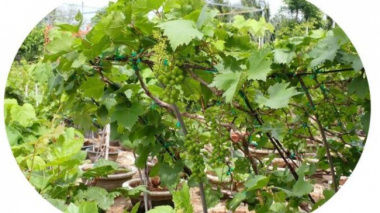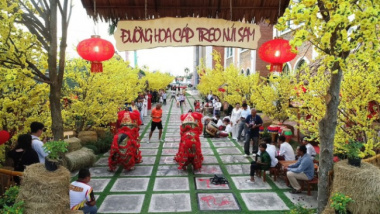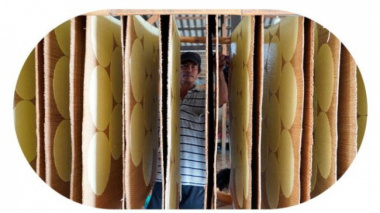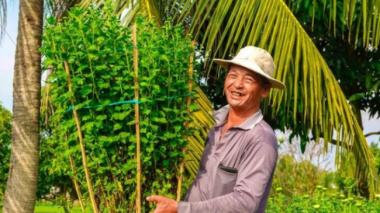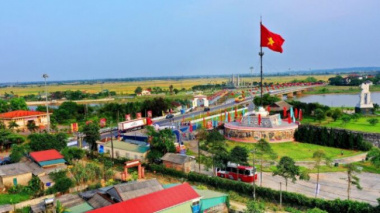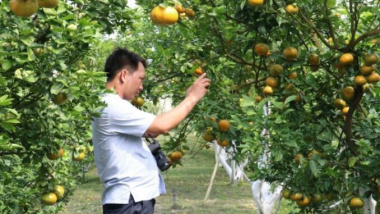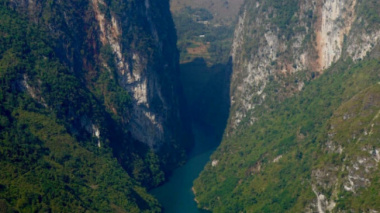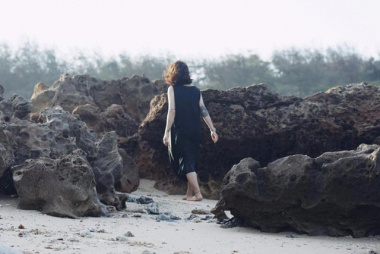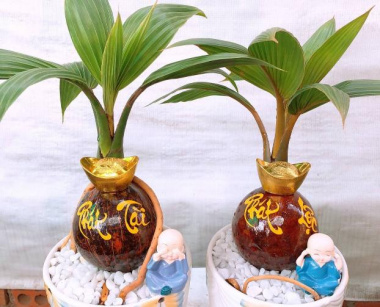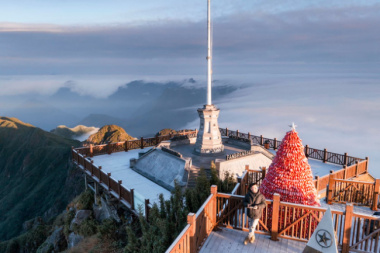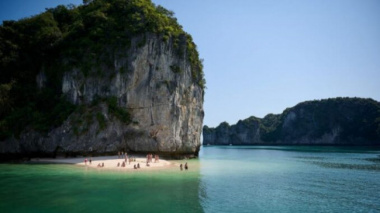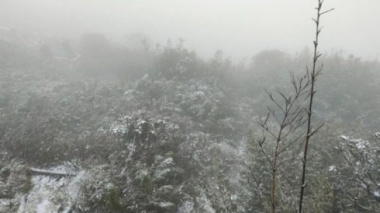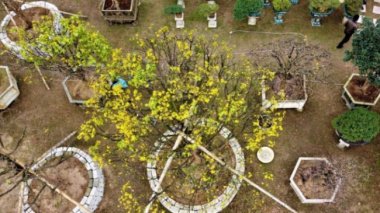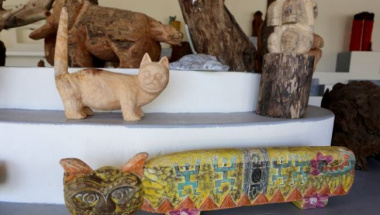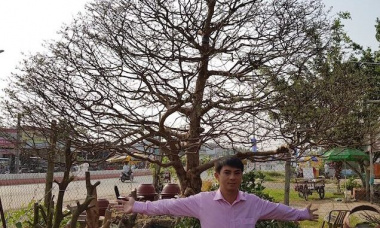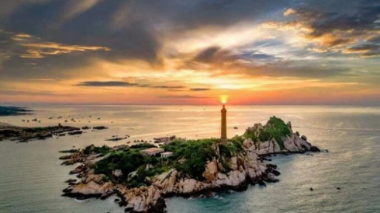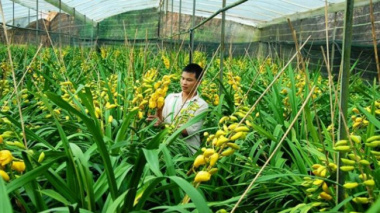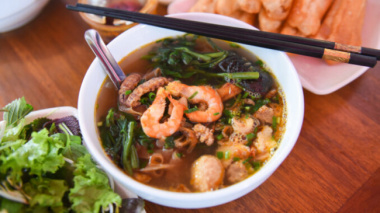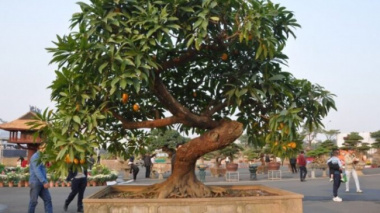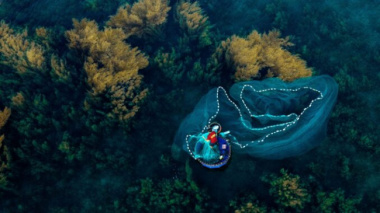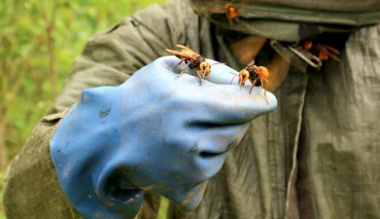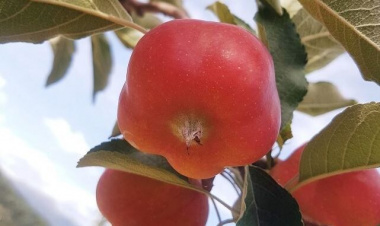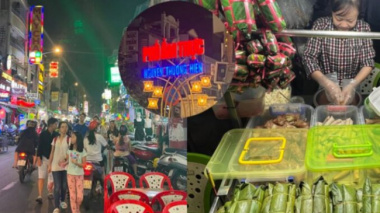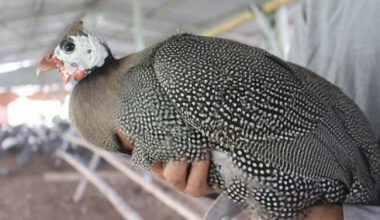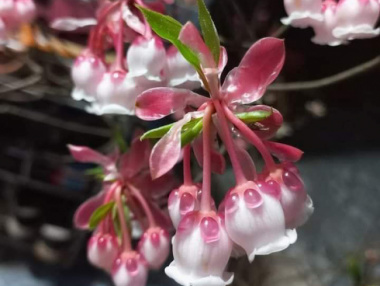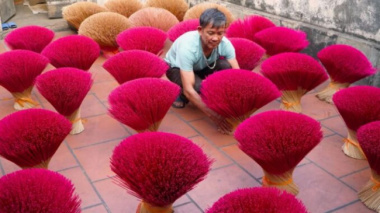Vietnam’s Natural Beauty and Landscape
- Mountains in Vietnam
- Fansipan Mountain
- Black Virgin Mountain
- Son Tra Mountain
- Caves in Vietnam
- Sung Sot Cave
- Hang Son Doong Cave (Phong Nha -Kẻ Bàng National Park)
- Lakes in Vietnam
- Ba Be Lake
- West Lake
- Thac Ba Lake
- Rivers in Vietnam
- Mekong River
- Red River
- Dong Nai River
- Waterfalls in Vietnam
- Ban Gioc Waterfall
- Pongour Waterfall
- Mu Waterfall
- Long Beach (Bai Truong), Phu Quoc
- Non Nuoc Beach, Da Nang
- Tran Phu Beach, Nha Trang
- Vietnam Plantlife
- Vietnam Wildlife
- Nature Attractions in Vietnam
- Halong Bay
- Cham Islands
- Phu Quoc Island
- City Parks in Vietnam
- Tao Dan Park
- Van Thanh Park
- Thong Nhat Park
- National Parks in Vietnam
- Cat Tien National Park
- Cat Ba National Park
- Nui Chua National Park
Nestled on the eastern side of the Indochina Peninsula, Vietnam is a country rich in biodiversity and natural splendor. Its towering mountains and stretches of dense, luscious forest are known the world over, and tourists from all over flock there every year to its nature.
Vietnam’s tropical climate and oceanside location create a perfect storm for plant and animal life. With its soaring mountains, deep valleys, and sky-blue oceans, it’s one of the best countries in the world for nature-lovers.
Vietnam’s landscape is a mix of large cities and towns, as well as rural countryside villages and still some native tribes. Wildlife numbers include an estimated 15,986 species of flora, 260 reptiles, 310 mammals, 120 insects, and 840 birds. The country is blessed with over 3,000 km of coastline and millions of acres of meandering woodland.

Sunrise in Ba Be, Northern Vietnam. Photo by: Rod Waddington
There are dozens of national parks and reserves in Vietnam where the natural landscape has been perfectly preserved. If you’re interested in seeing what Vietnam looked like before human civilization, explore these parks and become immersed in the dazzling nature on display.
Vietnam’s amazing landscape features include:
- Mountains
- Lakes
- Waterfalls
- Plantlife
- Wildlife
- Nature Attractions
- City Parks
- National Parks
Mountains in Vietnam
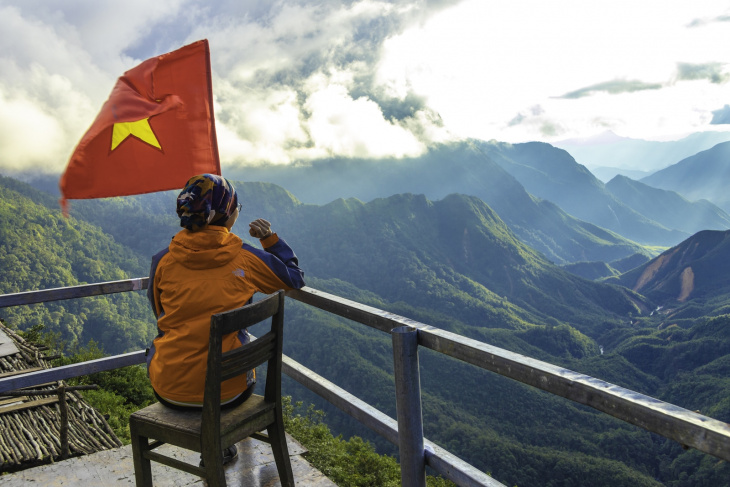
Overlooking the mountain landscape of Sapa, Vietnam. Photo by: Dong Le
Millions of years worth of tectonic activity have resulted in the numerous mountain ranges of Vietnam. From the dizzying height of Fansipan Mountain to the wildlife of Son Tra, there are plenty of mountains to explore.
Fansipan Mountain
Known as the roof of Indochina, Fansipan Mountain rises 3,147 meters above the ground. It’s the highest peak in Vietnam, Laos, and Cambodia and takes around two days to scale on foot.
Of course, you could always take Sun World’s cable car to the top and explore the pagodas and statues situated at the peak. You’ll be treated to unparalleled views of the Lao Cai Province and the dense forests resting below.
There are over 1,600 tree species living in the ancient rainforests around Fansipan’s base. The dense jungle is also populated by shrubs, vines, and blooming flowers. Since its formation during the Mesozoic era, Fansipan Mountain has become an integral facet of the Vietnamese ecosystem.
Black Virgin Mountain
Also known as the Ba Den Mountain, this soaring peak is the highest in Southeastern Vietnam. Considered a highly important spiritual landmark, Ba Den Mountain has a long and illustrious history in Vietnamese society.
According to legend, the mountain was named after a woman who committed suicide after her love for a soldier went unrequited. During the War, Ba Den’s high elevation and birds’ eye views were duly utilized by both Vietnamese and American forces.
Like Fansipan Mountain, you can take a cable car to easily reach the summit. The journey will reveal stunning panoramic views of the rainforests below. There are also statues, pagodas, and shrines at the peak. Several festivals take place here throughout the year.
Son Tra Mountain
Located in beautiful Da Nang, Son Tra Mountain is a stunning national park located almost 700 meters above sea level. It’s also referred to as Monkey Mountain due to the presence of the rare red-shanked douc in the area. This rare primate is famously shy and can be found living in the forests.
Nature-lovers will appreciate the views from the Ban Co peak – the highest mountain in the Son Tra formation. As Da Nang is situated by the sea, visitors will be treated to incredible views of the landscape and surrounding waters.
Caves in Vietnam
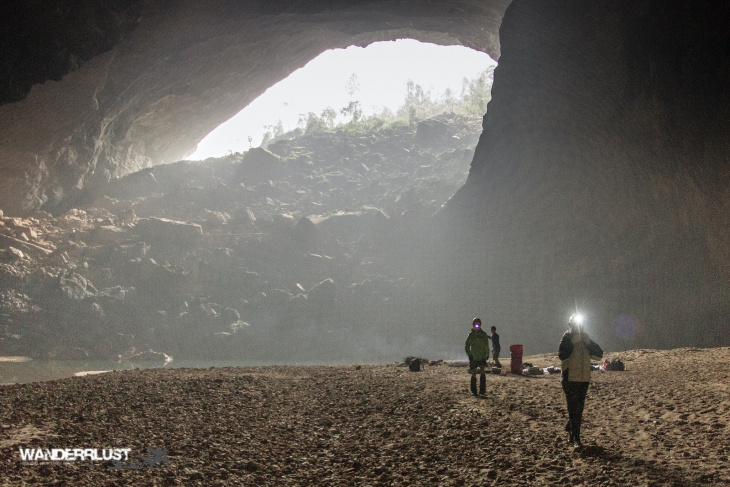
The rear of Hang En cave, Central Vietnam. Photo by: Hugh Derr
Vietnam’s nature isn’t limited to above the ground. Down below, there is a complex network of sprawling caves and huge grottos which are perfect for those who enjoy cave-diving.
Sung Sot Cave
Located in the magnificent Ha Long Bay, Sung Sot Cave (also known as Surprise Cave) was discovered by French colonists in 1901. Nicknamed the Grotte des Surprise, this massive cave features incredibly tall ceilings and smooth walls.
Overhanging stalagmites and large, spacious openings await visitors upon arrival. After traversing through the initial waiting room, you’ll find the Royal Garden – a serene pond area inhabited by flowers, birds, and monkeys.
Nestled at the top of a 50-step climb, Sung Sot Cave can be found on Bo Ho Island – one of the many islets of Ha Long Bay.
Hang Son Doong Cave (Phong Nha -Kẻ Bàng National Park)
Remarkably, Hang Son Doong Cave lay undiscovered until 1990. A local man stumbled upon it whilst sheltering himself from a vicious storm only to forget its location. Nineteen years later, it was rediscovered and entered for the first time.
Hang Son Doong is large enough to house an entire town. Reaching heights of 503 m and lengths of 9.4 km, the cave is so huge you could fly a jumbo jet inside it without any worry of scratching the wings.
A variety of plant and animal species can be found inside the huge cave, including birds, monkeys, bats, and even an internal jungle featuring 50 m high trees. So massive is Son Doong that it has its own weather system and visibility is limited due to the cave’s cloud formations.
Lakes in Vietnam

Fishing boat life in Northern Vietnam. Photo by: Rod Waddington
Vietnam is home to numerous natural lakes and manmade reservoirs. On a hot summer’s day, these Vietnamese lakes are the perfect location for a breezy afternoon.
Ba Be Lake
The largest natural lake in Vietnam, Ba Be Lake sits in the middle of Ba Be National Park. Comprising three smaller lakes, this massive body of water stretches 8 km and reaches depths of up to 35 meters.
The lake’s limestone islets can be explored whilst kayaking. Formed over millions of years, these islands are covered in vegetation and other plant life. There’s also an intricate cave network running through the lake. The most famous of these, Puong Cave, is 30 meters wide and 300 meters deep.
West Lake
The sprawling West Lake spans over 17 km and is Hanoi’s largest lake. Found in the Tay Ho District, West Lake is home to floating restaurants, ancient pagodas, and numerous luxury resorts. West Lake’s serene views and abundance of luxury hotels result in it being a hugely expensive area to live in.
The home of many wealthy Vietnamese and foreign residents, there’s no shortage of things to do in the area. The body of water also features the Tran Quoc Pagoda – the oldest pagoda in Vietnam. This ancient shrine was completed in the 6th century and is located on a small island on the lake’s southeastern shore.
Thac Ba Lake
The Yen Bai Province houses the massive Thac Ba Lake. Located 180 km from Hanoi, this massive man-made lake was built between 1964 and 1971. Thac Ba Lake is notable for the 1,300 green islands sitting on its surface. There’s also an abundance of caves which can be explored by boat.
Thac Ba Lake can be thought of as a mini-Ha Long Bay, with its emerald islets and intricate cave network. It was constructed by the Thac Ba hydroelectric plant and serves as a man-made oasis for numerous species of animal, plant, and marine life.
Rivers in Vietnam
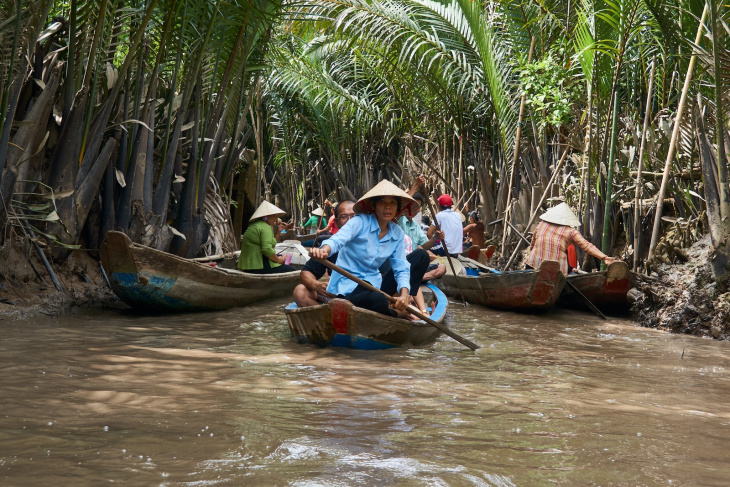
Mekong canoeing, Vietnam. Photo by: Radek Kucharski
Flowing rivers can be found all over Vietnam. An important source of vitality, scenery, and transportation of goods, Vietnam’s rivers have played an important role in the country for centuries.
Mekong River
The largest river in Southeast Asia, the mighty Mekong River spans over 2,700 miles. Flowing through China, Tibet, Burma, Laos, Thailand, Cambodia, and Vietnam, the Mekong River is the 12th longest in the world.
In Vietnam, the Mekong is known as the Nine Dragons River (or Cuu Long) and is a vital facet of Vietnam’s agricultural trade. Rice is the most popular food source grown on the wetlands of Mekong and several agricultural villages can be found on its banks. The Mekong Delta Region (located just south of HCMC) is home to a famous floating market as well as pagodas and other places of worship.
Red River
The 1,149 km Red River, also known as the Hong River, begins at the Yunnan Province in Southern China before meandering into Vietnam and departing at the Gulf of Tonkin. The river gets its name for carrying large amounts of fragile silt from the red lands, giving the water a burgundy tint at certain points.
The volume of the Red River is famously fluctuating and floods are common. During the 19th century, it was seen as a valuable trade route from China, before the invention of the railway became the standard method of transport. The main tributaries of the Red River are the Black River and the Lo River.
Dong Nai River
The 586 km Dong Nai River spans from Vietnam’s Central Highlands region down to the country’s southern area. Dong Nai flows past Bien Hoa and merges with the Saigon River southbound of Ho Chi Minh City. In the northwestern reaches of Dong Nai, flowing rapids and grand waterfalls can be found.
Waterfalls in Vietnam
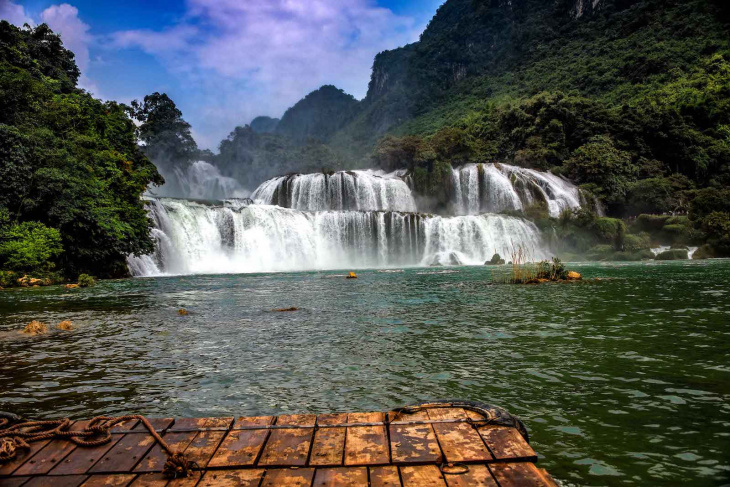
Ban Gioc waterfall, Vietnam. Photo by: Rod Waddington
Vietnam’s scenic waterfalls are popular spots for photographs, activities, and general relaxation. They are the perfect addition to any road trip, as it’s easy to include one when traveling long distances.
Ban Gioc Waterfall
The photogenic Ban Gioc waterfall is one of Vietnam’s hidden gems. Located in the Cao Bang Province, this stunning waterfall sits between the Vietnam/China border.
The tall, cascading waterfall is surrounded by deep valleys and dense forests. Due to its remote location (approximately 8 hours from Hanoi) not many know of the Ban Gioc Waterfall, however, the long journey to visit is certainly worth the effort.
Pongour Waterfall
The terraced Pongour Waterfall looks like it was sculpted by man. Rising 40 meters high and 100 meters wide, this waterfall can be found 50 km from Da Lat.
Pongour Waterfall is one of the most romantic natural attractions in Vietnam. With its wide steps and majestic waters, the waterfall is perfect for a relaxed sightseeing day. It’s also the site of an annual festival. On the 15th of January, you’ll see locals engaging in rituals and participating in games at the foot of the waterfall.
Mu Waterfall
Thriving green forests surround the beautiful Mu Waterfall. Nestled in Pu Luong Nature Preserve, this cascading waterfall is admired by locals and tourists alike. Mu Waterfall is the centerpiece of a humble agricultural village. Here, the friendly locals grow vegetables and catch fresh fish. They also reside in rustic stilt houses.
Pu Luong Nature Preserve is located in the Lac Son district of the Hoa Binh Province. It takes around two days to travel there from Hanoi, which is 130 km away.
Beaches
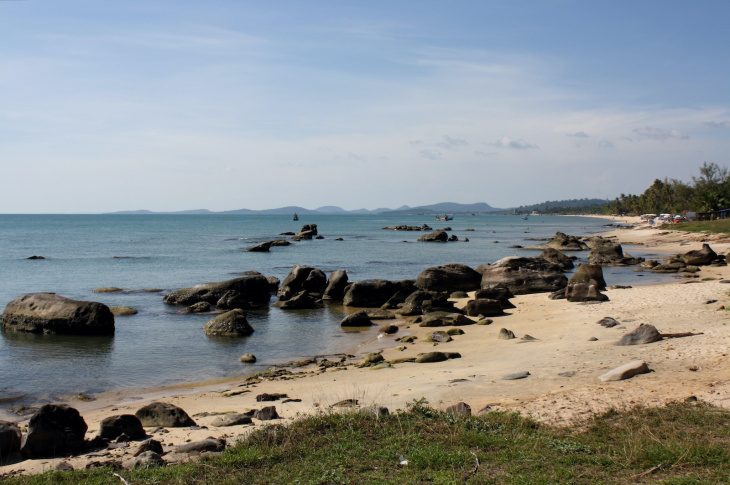
Bai Truong (Long Beach), Phú Quốc, Vietnam. Photo by: Dan Searle
With its thousands of miles of coastline and plethora of serene islands, Vietnam has plenty of beautiful beaches at its disposal. Halong Bay and Phu Quoc Island are famous for their stunning beaches, but there are plenty of other Vietnamese shores that are equally mesmerizing.
Long Beach (Bai Truong), Phu Quoc
The 20 km Long Beach is one of Vietnam’s top beach attractions. There are plenty of plush hotels, delicious restaurants, and chilled-out seaside bars for you to spend your time in and the beach offers spectacular sunset views. The most touristy beach in Phu Quoc, Long Beach is extremely busy and is jam-packed with beach attractions.
Bars and clubs are easy to find and are bustling during the summer months. However, due to the size of the beach, finding a tranquil spot isn’t too difficult. The waters around Long Beach are warm and relatively shallow – meaning that children can swim in them safely.
Adding to the tropical vibe is an abundance of palm trees lining Long Beach’s perimeter, making you feel as if you’re in the heart of a sun-kissed oasis.
Non Nuoc Beach, Da Nang
The five-kilometer Non Nuoc Beach may well be the best family-friendly beach in Vietnam. Suitable for watersports, swimming, and casual exploration, Non Nuoc Beach is located 20 minutes away from Da Nang City.
Ideal conditions for surfing, kayaking, and paddleboarding fall between April and September. During this time, waves are prominent and water temperatures are at a comfortable temperature.
Da Nang houses some of Vietnam’s most impressive beaches and Non Nuoc Beach is certainly no exception. There’s also a number of beachside hotels on the premises.
Tran Phu Beach, Nha Trang
The most popular beach in Nha Trang, Tran Phu Beach is renowned for its pale gold sand and sky blue seas. With Trang Phu street on its doorstep, visitors can combine shopping, eating, and sightseeing with a relaxing day on the beach. You can also hire a sun-bed and watch the world go by. In the evening, visitors can enjoy an array of clubs and nighttime bars.
Vietnam Plantlife
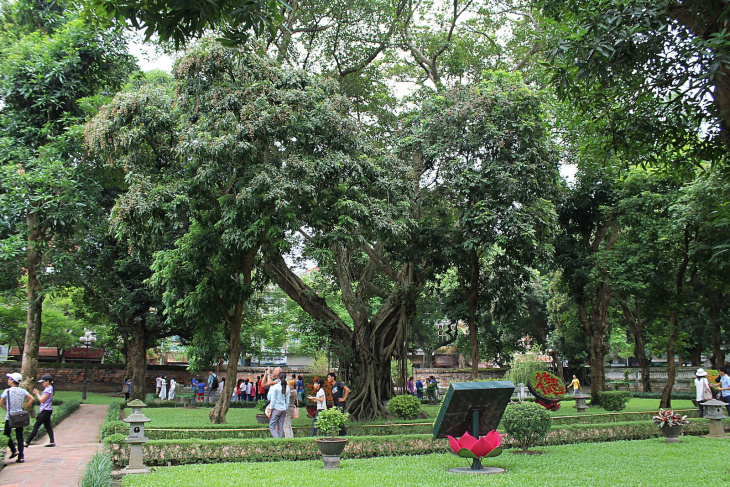
Banyan trees in Ha Noi. Photo by: elPadawan
Though deforestation, urban planning, and war have greatly reduced the size of the Vietnamese jungles and forests, there is still an abundance of tree, flower, and bush species residing in the country.
Between 1997 and 2007, over 1,000 new plant species were discovered in Vietnam. The distinctive crown flower (known as Chi bòng bòng in Vietnam) can be seen throughout the country. These photogenic flowers are known for their violet colors and delicate appearance.
Banyan trees are an iconic part of Vietnamese jungles. The basis for many myths and legends, these sprawling trees can be found towering over Vietnam’s dense, intricate rainforests. You’ll be able to spot one by observing its twisted, tangled root system.
Vietnam Wildlife
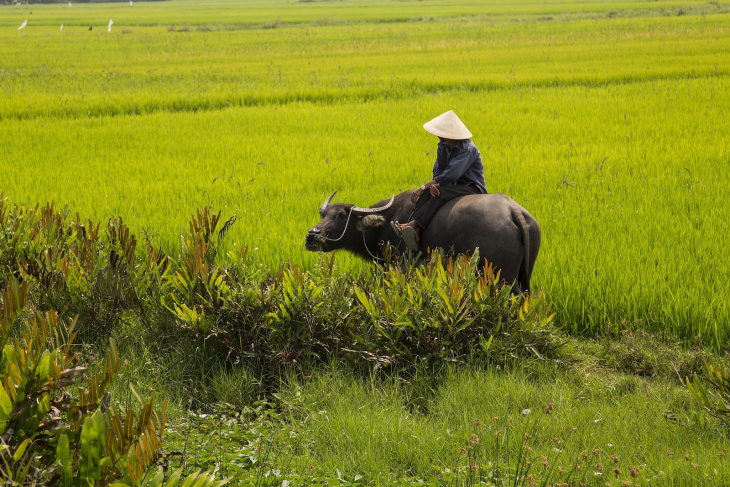
Water Buffalo and Farmer, Hoian. Photo: gmacfadyen
Vietnam’s unique biodiversity has resulted in an eclectic range of flora and fauna. The country’s official national animal is the water buffalo. These docile, peaceful animals have a long history in Vietnam – being used in agriculture for thousands of years. Living off a diet of marine vegetation, these beloved animals are prey for crocodiles, who also have a strong presence in Vietnam.
Burmese pythons are common, non-venomous snakes often found near bodies of water. If you come across one during your travels, try not to worry as they will not hurt you or become aggressive.
The white-headed langur is a critically endangered primate residing on Cat Ba Island. These rare primates can be found resting high up in the area’s national parks and nature preserve trees. Only a handful of these animals exist, so be sure to take a photo of one if you’re lucky enough to see one.
The Vietnamese seas are home to thousands of aquatic species. The unique horned sea star can be found in the waters around Phu Quoc. Resting just beneath the surface, these formidable starfish pose no real threat to tourists, so feel free to take a picture of one up close.
Past the horizon is where the spectacular Japanese flying squid can be found. Once in the presence of danger, they can propel themselves up to 30 m across the surface of the water.
There are thousands of unique, charismatic animals residing in Vietnam. One of the most biodiverse countries in the world, Vietnam’s tropical climate and vast natural resources have made wildlife thrive.
Nature Attractions in Vietnam
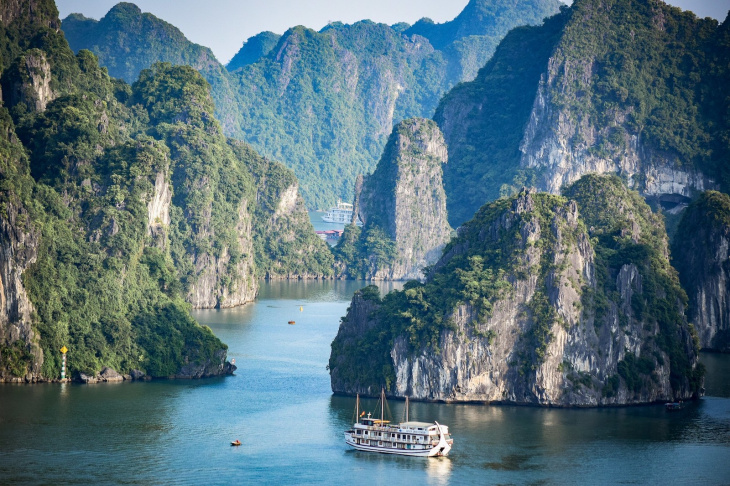
Ha Long Bay. Photo: Teseum
You’ll be spoilt for choice when exploring Vietnam’s natural attractions. One of the world’s most beautiful counties, there’s an abundance of natural wonders awaiting you when you visit.
Halong Bay
One of the country’s most famous and well-regarded sites, Halong Bay’s turquoise waters and towering cliffs have become iconic. A UNESCO World Heritage Site, the bay features over 3,000 islands and islets of differing shapes and sizes. The islands are home to monkeys, birds, bats, and countless plant species.
There’s a lot more to Halong Bay than photogenic scenes and Instagrammable views. In fact, the area can be considered a microcosm of plants and wildlife. Behind the dense forests of the miniature islands lies a deep and intricate cave system.
The most well-known of these, Sung Sot Cave, is a deceptively large grotto spanning 10,000 square meters. The overhanging stalagmites almost resemble the ancient chandeliers from a long-lost music hall and views from the cave’s openings are truly mesmeric.
Halong Bay is also home to over 150 species, and the reefs have become an integral part of the local ecosystem. Housing countless numbers of fish, algae, and plants, these stunning reefs play a key role in the country’s aquatic food chain. Snorkeling in these reefs is a popular activity, as visitors can familiarize themselves with the local marine life.
Humans also have a rich history here. Numerous archeological digs have uncovered evidence of a prehistoric society in the Bay, where ancient humans sustained themselves on the rich diet of plants and marine life.
With over 500 million years of history, Halong Bay represents the best of Vietnam’s nature. Sculpted by coastal erosion and oceanside winds, this paradise is more alive than ever.
Cham Islands
The legendary Cham Islands are a recognized UNESCO World Biosphere Reserve. As a popular tourist attraction, the stunning landscape is the perfect place for water-based activities. It provides an immersive insight into Vietnam’s coastal nature.

Cham Islands. Photo: Guerretto
The abundance of maritime resources includes over 400 acres of coral and 1,500 acres of seaweed. There are also close to a thousand aquatic species on the islands, with colorful fish and bright corals clearly evident in the shallower areas.
Nature-lovers should head to Cu Lao Cham Marine Park. This beautiful nature reserve showcases coastal Vietnam at its very best. With dense rainforest, near-transparent waters, and grand limestone cliffs, the park is quintessentially Vietnamese.
Phu Quoc Island
Phu Quoc is one of the most underrated destinations in Vietnam. Though the famous cable car ride has brought publicity to the area, it still retains all of its authentic and original wonders.
Phu Quoc National Park, for example, is rich with dense forests and spellbinding hiking trails. The most popular of these, the Ganh Dau Trail, displays the area’s ancient trees and serene, photogenic views.
The marine life of Phu Quoc lives in the An Thoi Archipelago. Much like Halong Bay and the Cham Islands, this underwater nirvana is home to thousands of species of fish, coral, algae, and aquatic mammals. The fishing villages of Phu Quoc have been living off the abundant marine life for generations.
Nature-enthusiasts and seafood connoisseurs will love Phu Quoc. The area’s pristine beauty and ancient woodlands house some of the country’s most valuable exports and the undisturbed serenity is something definitely worth seeing.
City Parks in Vietnam

Tao Dan Park. Photo: Anthony Tong Lee
If you’re in the city and wish to escape the hustle and bustle, then head down to these peaceful parks for a relaxing, free detour. There are many public parks in Vietnam, and below you’ll find some of the best.
Tao Dan Park
The most famous park in Saigon, Tao Dan Park plays an important role in the city. The 24-acre park is lined with tropical trees, blossoming flowers, and small wildlife. In the early morning hours, tourists and locals utilize the park for exercise and meditation.
The Zen-like surroundings and abundance of nature are both relaxing and inspiring. Be sure to listen to the park’s singing birds for an immersive experience in nature.
Tao Dan Park can be found in the District 1 area and is open year-round. Be sure to visit the park in the morning, before the heat of the city takes hold.
Van Thanh Park
Also located in Ho Chi Minh City, this government-owned park is much quieter than Tao Dan Park. Its artificial lake and array of trees provide relief from the sweltering temperatures of the Vietnamese summer.
There’s also a swimming pool (which can get crowded on hot days) and a lakeside cafe. The park’s decorative statues evoke an old-world feel and make for interesting photography subjects. Van Thanh Park can get hectic on weekends, so try and visit during the week if you’re longing for some solitude.
Thong Nhat Park
Thong Nhat Park offers a welcome retreat from Hanoi’s surging energy, though not as large as other Vietnamese parks. Spanning 50 hectares, the park is popular with young and old alike. You’ll catch people jogging, cycling, meditating, running, and working out in this luscious green space.
The park features towering trees, colorful flowers, and a tranquil lake. It’s the perfect place to unwind, have a picnic, and escape the hustle and bustle for a few hours.
National Parks in Vietnam

Talai Longhouse at Cat Tien National Park. Photo: Sam Sherratt
National parks are perfect for explorers. If you’re longing to be immersed in nature, then a visit to these stunning national parks is highly recommended.
Cat Tien National Park
This sprawling, 72,000-hectare park is an oasis of tropical beauty. Featuring ancient trees, botanical gardens, and dense rainforests, the flora on display is some of the best in the country. The park is also home to an eclectic mix of wildlife including rare birds, massive reptiles, and acrobatic primates.
Crocodile Lake is a major attraction where visitors can see these charismatic beasts up close and in the flesh.
Although larger animals (such as leopards and elephants) reside in the park, they are seldom seen due to them living deep within the rainforest. However, if you get lucky you may witness them during your visit. Cat Tien National Park showcases the absolute best of Vietnam’s nature. It’s usually very busy on weekends and public holidays, so be sure to plan your visit accordingly.
Cat Ba National Park
The expansive Cat Ba National Park is located 30 km from Hai Phong. A UNESCO World Biosphere Reserve, the park houses some 32 species of wildlife, including the rare white-headed langur. The massive park spans over 17,0000 ha, so a tour guide is definitely recommended.

Cat Ba National Park. Photo: nhadatvideo
The landscape of this park is quintessentially tropical. Featuring humid rainforests, dense wetland, and flowing rivers, the park is a true natural wonder. It’s also situated around the sky-blue waters of the country’s northeastern shore.
For a panoramic view of the jungle, head to the summit of Ngu Lam park. Ascending may be taxing, but it’s definitely worth the effort. Cat Ba National Park is best avoided during the rainy season, and be sure to take appropriate clothing and nutrition with you.
Nui Chua National Park
Nui Chua National Park is the crown jewel of Vietnam’s natural landscape. Located in the Ninh Thuan Province, this beautiful park is home to over 300 animal species and 600 plant species. The park’s cinematic landscape and near-transparent waters make it a true wildlife haven.
Visitors can hike, walk, explore, and observe the plethora of life at Nui Chua National Park. You can even dive underwater and witness the intricate coral reef system beneath the ocean’s surface. There are plenty of plush and upmarket resorts around the park, including the famous Amanoi Resort – one of the best hotels in the whole country.
You can spend a lifetime exploring Vietnam’s expansive nature. A country rich in plant and animal life, plus stunning natural beauty it’s a lovely place for a vacation any time of year.
Đăng bởi: Phạm Thị Hải Yến


